North from Grassington to Kelber via Bare House, then north-east to Mossdale along Bycliffe Road. South-east then south across Grassington Moor and through the lead mines to Cupola Corner. South briefly alongside Hebden Beck, before heading south-west by way of Tinkers’ Lane. Back to Grassington using Edge Lane and Moor Lane. A 13-mile walk in the Yorkshire Dales.
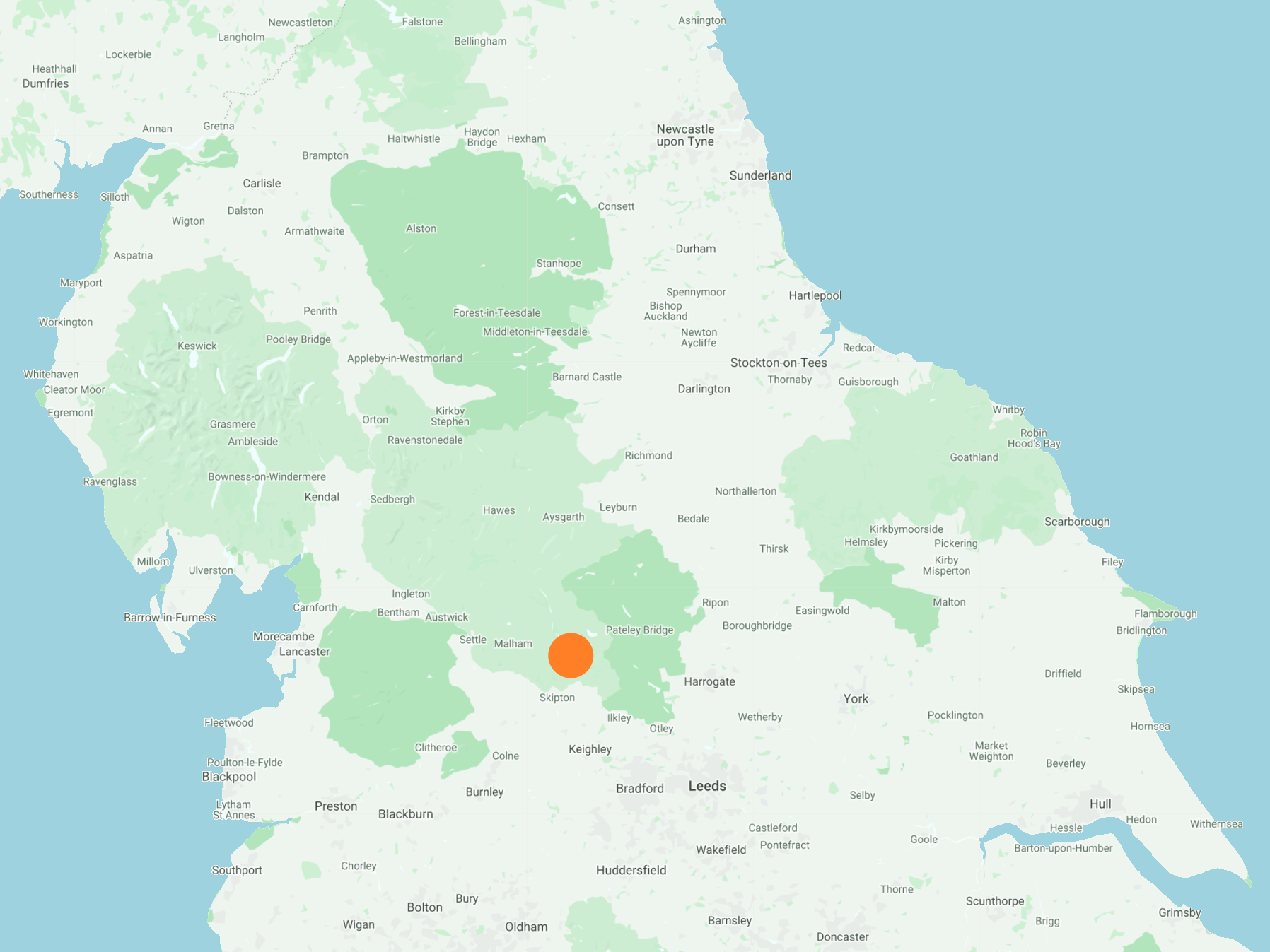
Recommended Ordnance Survey Map
The best map to use on this walk is the Ordnance Survey map of the Yorkshire Dales Southern & Western Area, reference OS Explorer OL2, scale 1:25,000. It clearly displays footpaths, rights of way, open access land and vegetation on the ground, making it ideal for walking, running and hiking. The map can be purchased from Amazon in either a standard, paper version or a weatherproof, laminated version, as shown below.
Standard Version
Bare House on Grassington Moor, about two miles north of Grassington.


Mossdale Scar, between Grassington Moor and Conistone Moor.
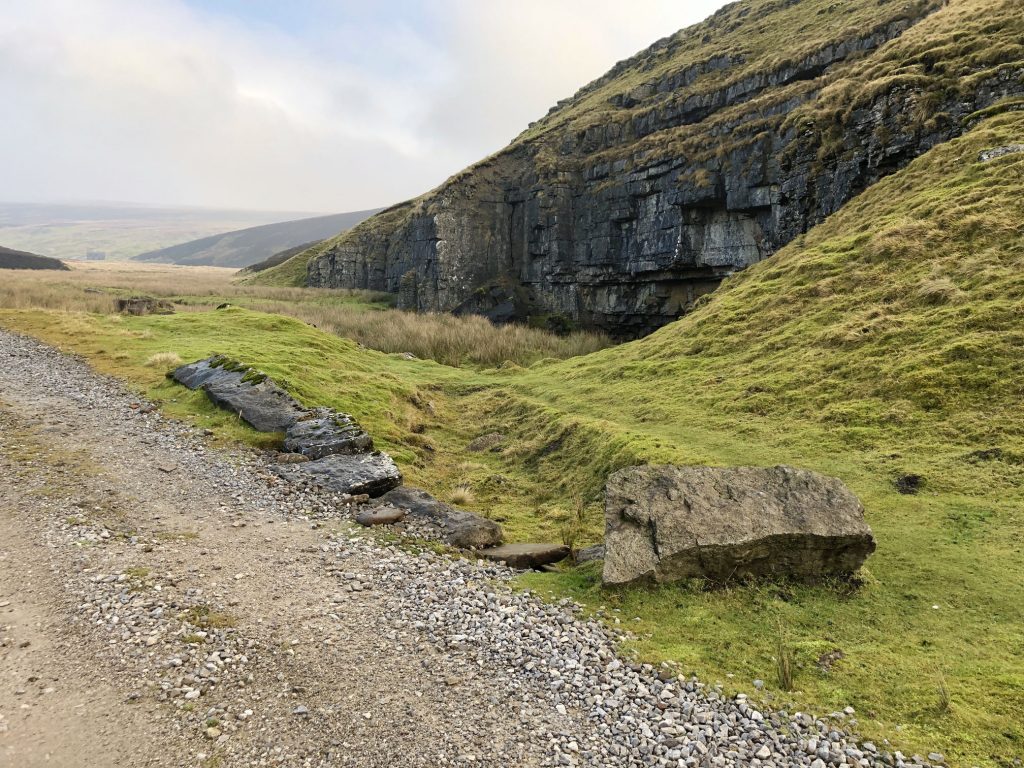

Mossdale Beck flows south through Mossdale until it reaches the base of Mossdale Scar. It then disappears underground where it has helped to create a cave system known as Mossdale Caverns. The beck has been shown by dye testing to resurface at Black Keld, about 2½ miles to the west near the River Wharfe.



The 1967 Mossdale Caverns tragedy
The cave system is notorious amongst cavers in the United Kingdom for a tragedy that occurred on 24 June 1967. On that day, ten cavers entered the system. Three hours later, four members of the party decided not to continue and exited. One of these four returned to the entrance shortly afterwards, only to find it completely submerged due to recent rainfall having swollen Mossdale Beck. Realising immediately that the six cavers who remained inside the cave system were in danger, she ran 2½ miles across the moor to raise the alarm.
Cave rescue teams arrived at the scene, but the high water levels prevented access to the cave. The waters of Mossdale Beck had to be diverted away from the cave entrance by digging a trench. Even then the rescue operation could not be started because of the high water levels inside.
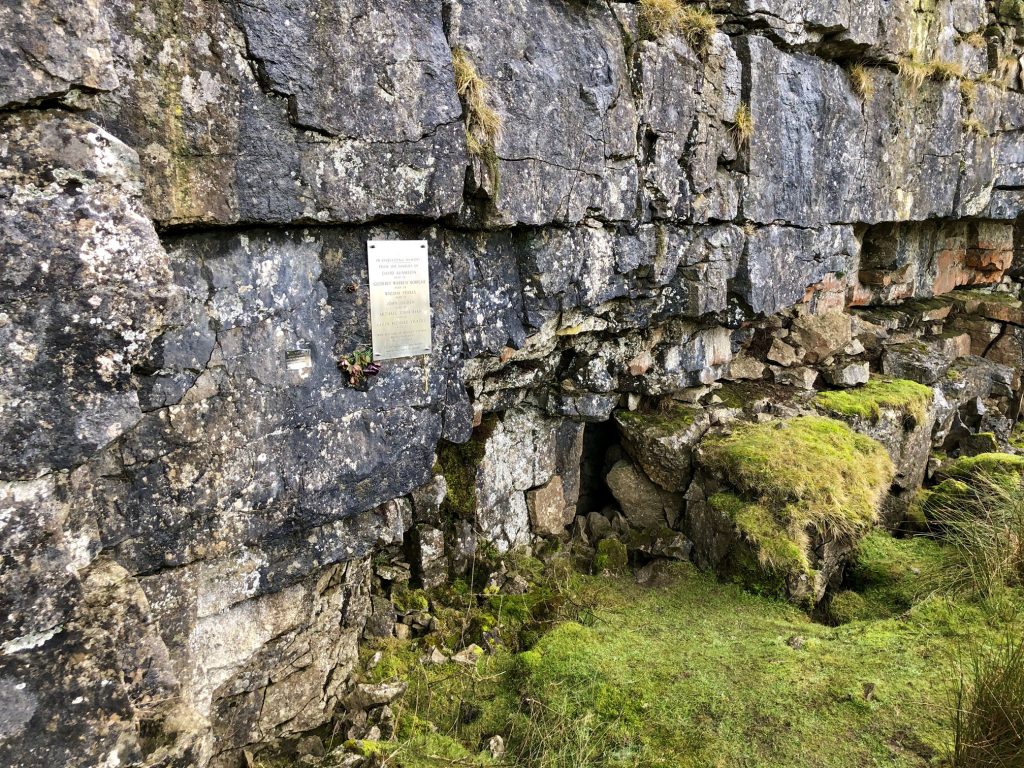
It was not until the following day that entry was possible. The cave rescue teams found the bodies of five of the cavers in the Far Marathon Crawls, and Bob Leakey led a search party to a location where he believed the sixth might have survived, but without success. The sixth body was located the following day. The bodies were left in situ. The coroner decided to seal the cave, and concrete was poured down the only safe entrance. This was later re-opened and in 1971, with the agreement of their families, the bodies were buried by their colleagues from the ULSA in “Mud Caverns”, a chamber at the far end of the system.
This is to date the most deadly incident in British caving. A memorial plaque is affixed to the cliff above the entrance.
Information from https://en.wikipedia.org/wiki/Mossdale_Caverns
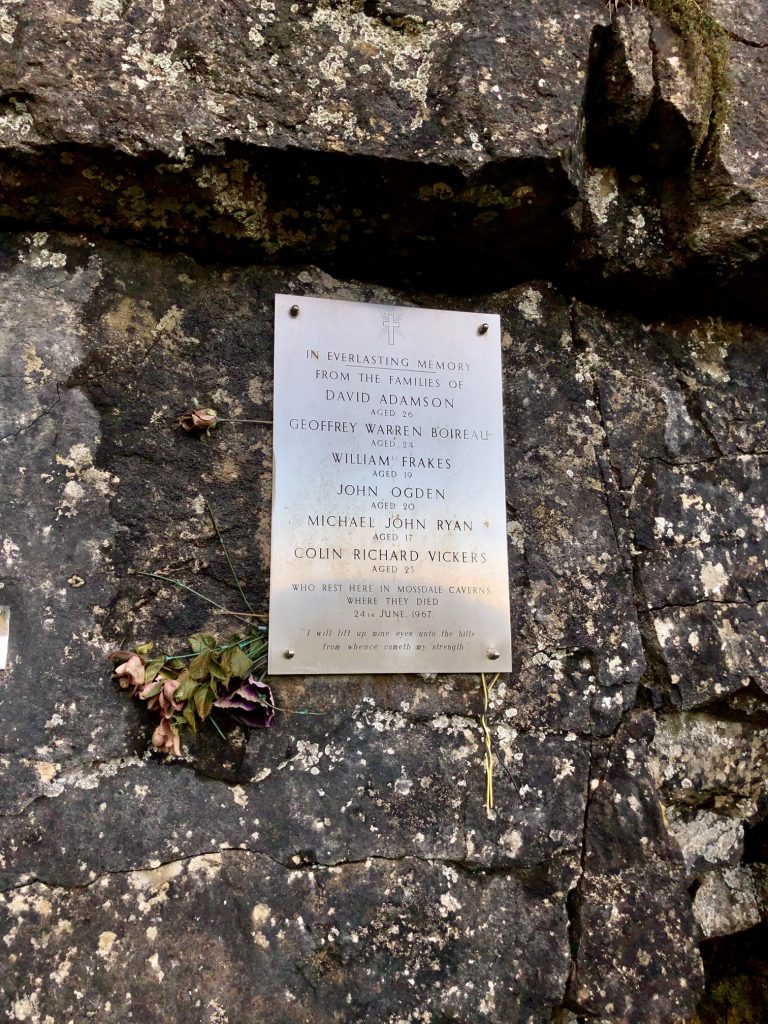
Footbridge and shooting lodge in Mossdale.
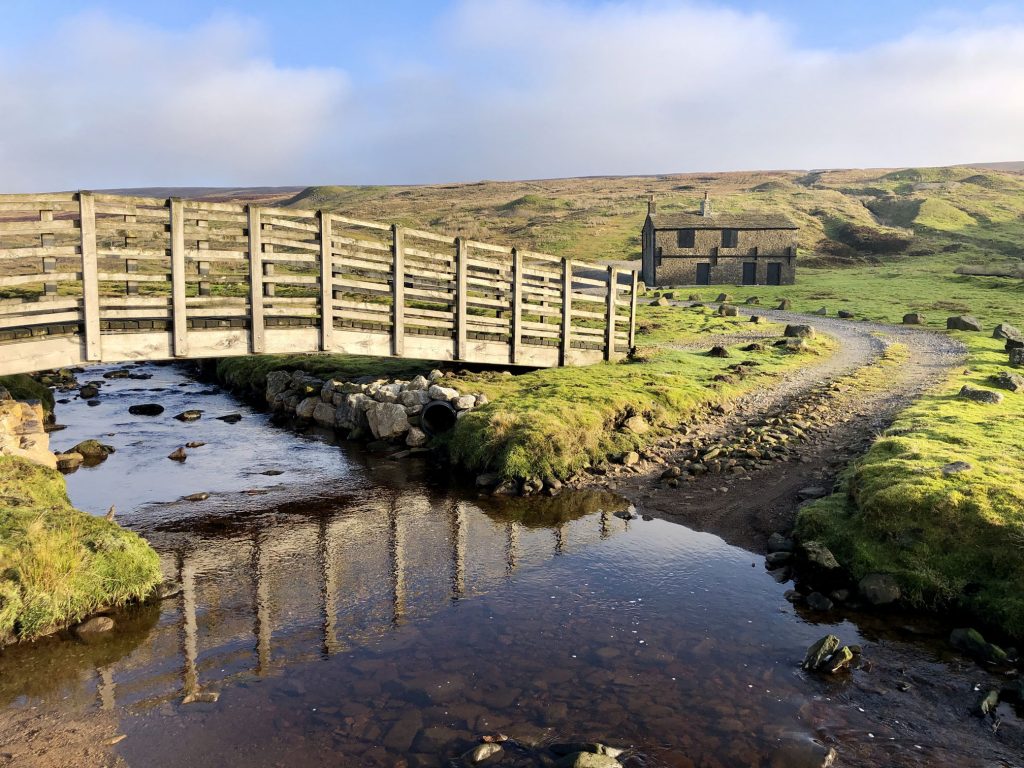
Footbridge over Mossdale Back.

Mossdale Beck, and the view north through Mossdale.

Shooting lodge in Mossdale.

Rowan Tree Scar by the side of Mossdale Beck.

Chimney and flue system at the rear of the Cupola smelt mill on the site of the 17th-century Grassington Moor lead mines.


The remains of the Cupola smelt mill, part of the 17th-century Grassington Moor lead mines.
